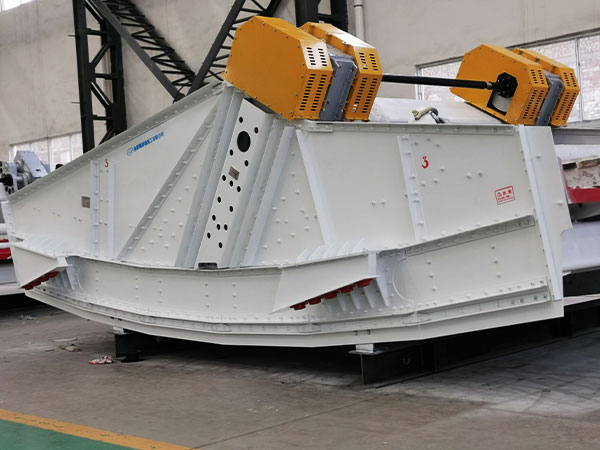What is the working principle of linear vibrating screen?
A linear vibrating screen is a type of vibrating equipment commonly used in various industries for the screening and sizing of bulk materials. It consists of a screen box, a vibration motor, and a vibration damping system. The screen box contains one or more screen decks made of wire mesh or perforated plates, which separate the materials into different size fractions.
Advantages of linear vibrating screens

High Efficiency: Linear vibrating screens offer high screening efficiency due to their straight-line motion and large screening area. This makes them suitable for applications where high throughput and accurate particle size separation are required.
Versatility: Linear vibrating screens can handle a wide range of materials, including dry bulk solids, powders, granules, and liquids. They can be used for scalping, dewatering, grading, and sorting operations.
Easy Maintenance: Linear vibrating screens are relatively simple in design and have fewer moving parts compared to other types of vibrating screens. This simplifies maintenance and reduces the risk of mechanical failures.
Customizable Configurations: Linear vibrating screens can be customized to meet specific application requirements. The number of screen decks, screen mesh or plate materials, and the angle of inclination can be adjusted to optimize the screening process.
Working principle of linear vibrating screen

Vibration Motor: The linear vibrating screen is equipped with one or multiple vibration motors. These motors generate vibrations that cause the screen box to move in a linear or straight-line motion.
Screen Box: The screen box is the main component of the linear vibrating screen. It is composed of a sieve bed, side plates, screening surfaces, and a discharge end. The material to be screened is fed onto the sieve bed.
Vibration Generation: The vibration motors are mounted on the side plates of the screen box. When the motors are activated, they generate vibrations that are transmitted to the screen box. These vibrations cause the screen box to move back and forth in a linear motion.
Screening Surface: The screening surfaces are made of wire mesh or perforated plates with specific hole sizes. As the screen box moves, the material on the sieve bed is subjected to the vibration and is transported along the length of the screen.

Sieving Process: The material on the sieve bed is stratified due to the linear motion of the screen box. Smaller particles pass through the openings in the screening surface and fall through the discharge end, while larger particles are retained on the surface and move along the screen.
Discharge: The discharge end of the linear vibrating screen is designed to allow the undersized particles to pass through, while the oversized particles are conveyed to the end of the screen for further processing or disposal.
Adjustment: The amplitude and frequency of the vibrations generated by the motors can be adjusted to optimize the screening process. This allows for customization based on the specific material and desired separation efficiency.
Linear vibrating screens are used in various industries, including mining, quarrying, aggregate production, recycling, chemical, and food processing. They are particularly suitable for fine particle separation and can be used in both wet and dry applications.


